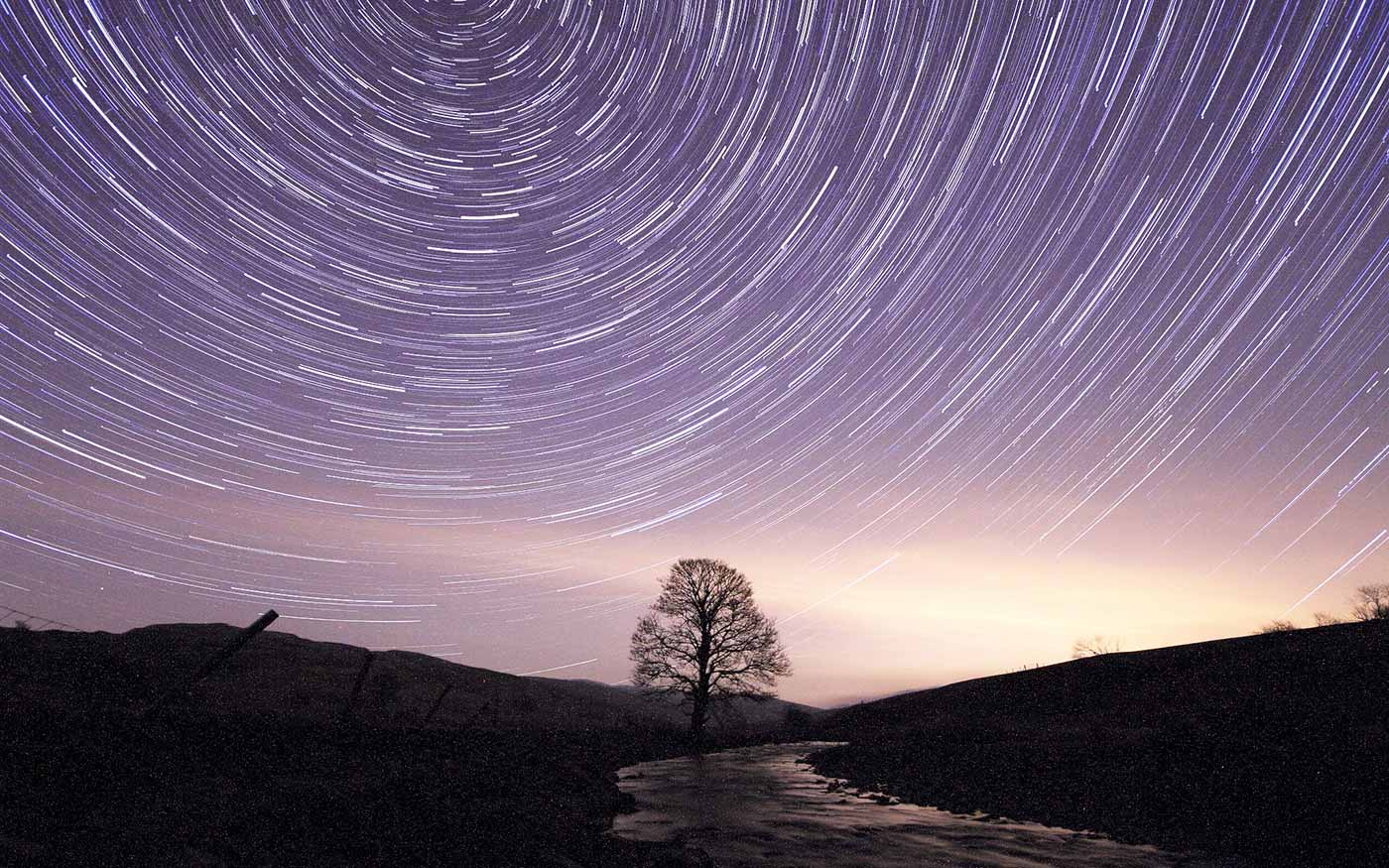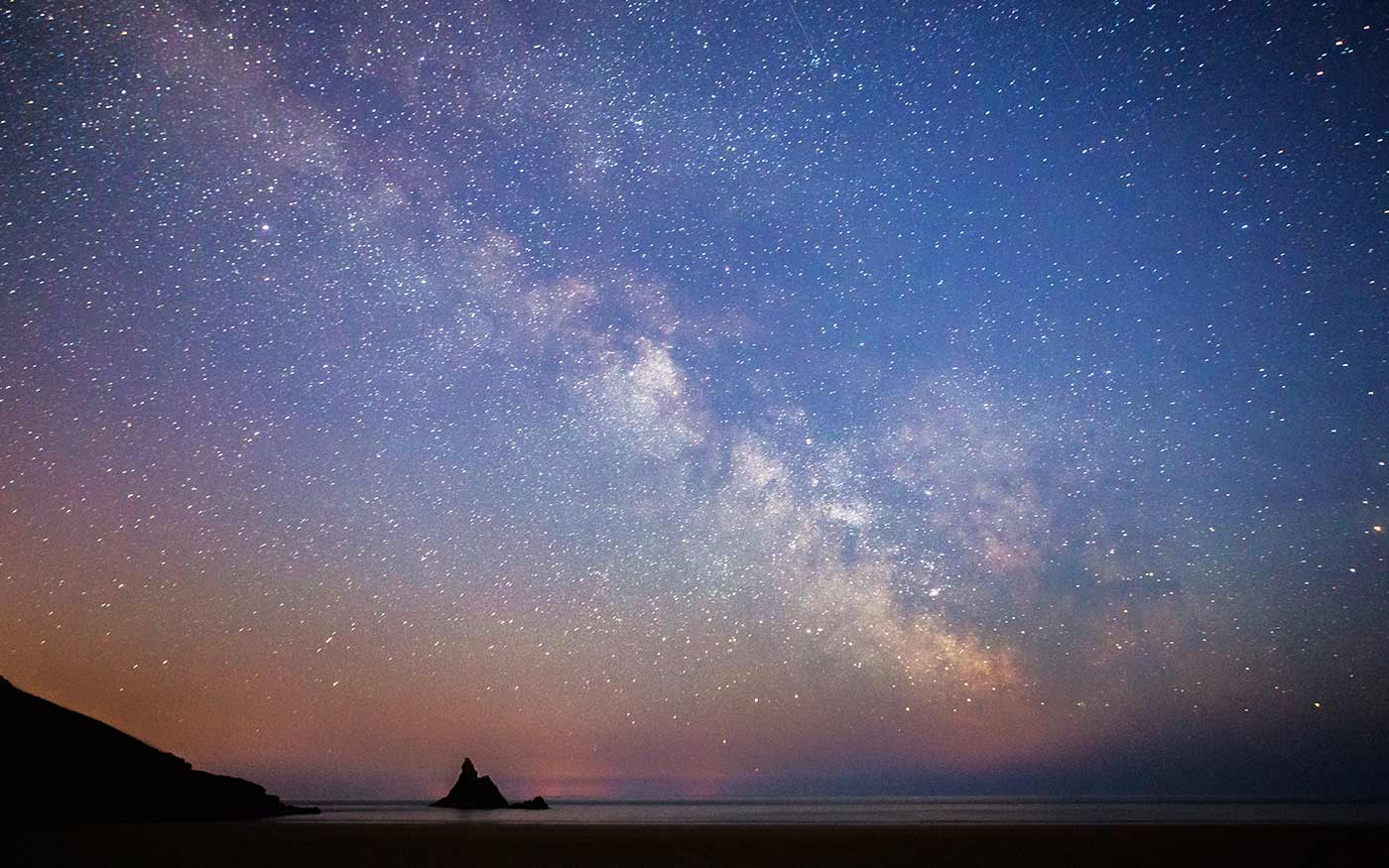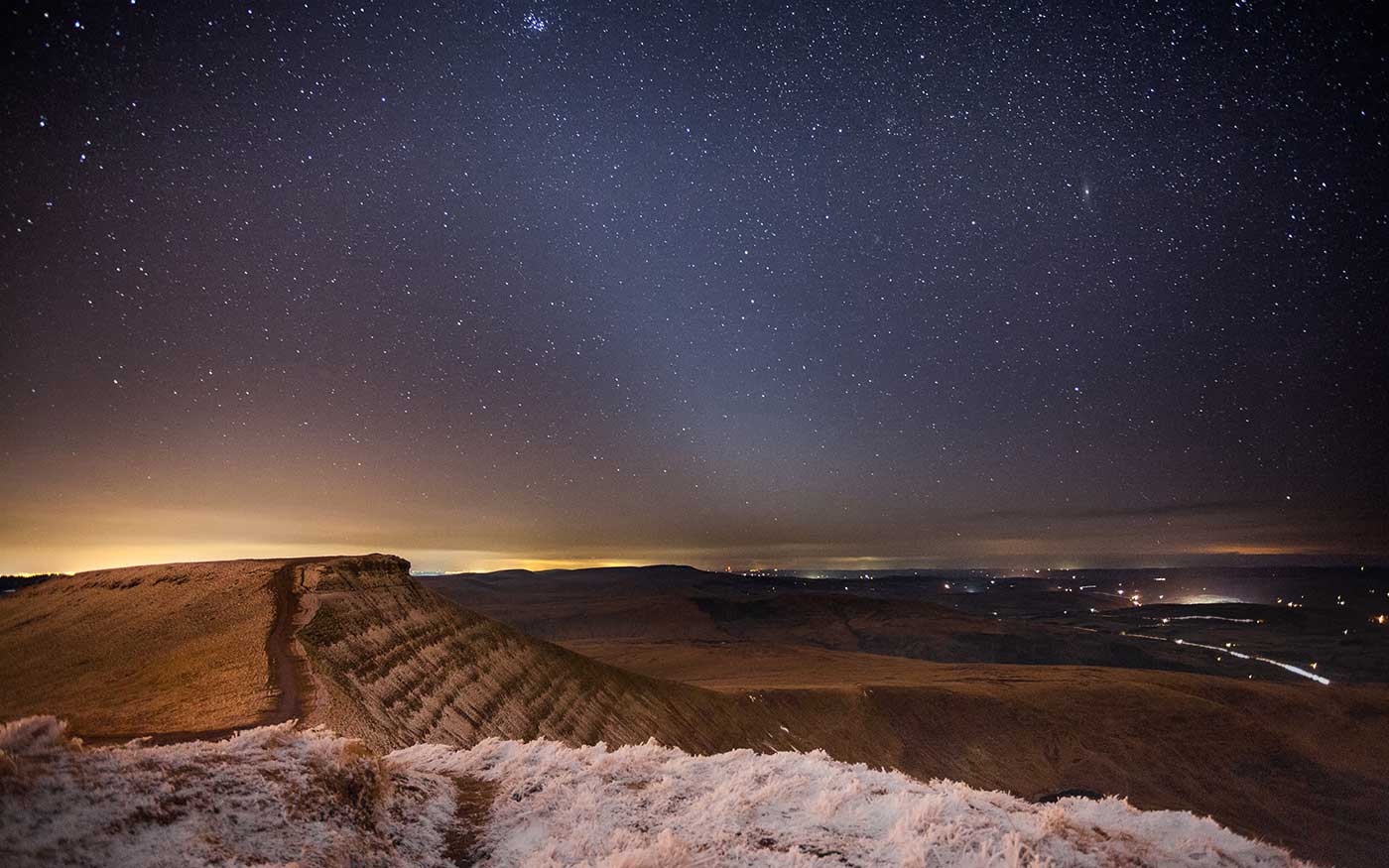Blog
Awyr Y Nos: Hydref 2020
01.10.20
3rd: Moon and Mars, close approach (figure 1). Accessible approximately 20:20, then moving above Eastern horizon. Appearing at maximum height in sky approximately 02:00 above Southern horizon. Visible to the unaided eye.
Moon will be approximately 406000 km (252277 miles) from Earth, while Mars will be approximately 62 million km (38525014 miles) from Earth.

Figure 1: Moon and Mars, close approach.
5th: Camelopardalid meteor shower (figure 2, 3), active from 5th to 6th. Radiant point is constellation Draco. Radiant point will be above horizon and meteors will be active most of the night (after dusk).

Figure 2: Camelopardalid meteor shower radiant point (red dot).
Radiant point borders constellations: Draco, Ursa Minor, Cephus, Cassiopeia, Perseus, Auriga, Lynx and Ursa Major. Parent body is comet 209P/Linear.

Figure 3: Camelopardalid meteor.
6th to 10th Draconid meteor shower (figure 4, 5, 6) in constellation Draco. Always above horizon and observable throughout the evening. Best displays just after dusk on the 8th.

Figure 4: Draconid meteor shower emanating from the radiant point.

Figure 5: Draconid meteors, debris from comet 21P/Giacobini-Zinner.

Figure 6: Constellation Draco, as seen with the unaided eye.
10th: Southern Taurid meteor shower (figure 7, 8) active until 20th November, peak rate of meteors, 10th October. Possibility of seeing meteors whenever the shower's radiant point, constellation Cetus, is above horizon, with the number of visible meteors increasing the higher the radiant point in the sky.
Visible, approximately 19:15 to 07:00 every night, with the radiant point above Eastern horizon.

Figure 7: Southern Taurid meteor. Parent body of Southern Taurid meteor shower is comet 2P/Encke.

Figure 8: Constellation Cetus.
11th: Delta Aurigid meteor shower (figure 9, 10, 11), active until 18th with maximum shower on 11th at 05:00 (BST). Radiant point in constellation Auriga. Active throughout the night, possibly one meteor per hour.

Figure 9: Meteor showers happen when Earth encounters debris from a comet.

Figure 10: Delta Aurigid meteor.

Figure 11: Constellation Auriga.
18th: Epsilon Geminid meteor shower at Eastern horizon (figure 12, 13), active 14th to 27th (peak on 18th). Caused by Comet C/1964 N1 (Ikeya).
Visible between 21:30 and 07:10.

Figure 12: Gemini constellation.

Figure 13: Epsilon Geminid meteor shower.
21st: Peak of Orionid meteor shower (figure 14, 15), radiant point, constellation Orion, Eastern horizon. Visible, 22:00 to 07:15. Parent comet, 1P/Halley.

Figure 14: Orionids meteor shower.

Figure 15: Orion constellation.
24th: Leonis Minorid meteor shower (figure 16 and 17). Active until 27th in constellation Leo Minor. Starting at Western horizon and ending at Eatern. Visible from dusk through to 22:40. Parent body is comet C/1739K1.

Figure 16: Leo Minor constellation.

Figure 17: Radiant Point of Leonis Minorid Meteors.
WARNING: Never attempt to view through binoculars, telescope or any optical aid an object near to the Sun. Also, never attempt to view the Sun, aided or unaided, doing so may result in immediate and permanent blindness. Always use astronomical approved viewing equipment.
The Stellarium software will assist greatly in locating objects in the sky.
Mark R Smith FRAS FRi
Physicist
Nuclear Fusion Physics Astrophysics
Efallai y byddwch hefyd fod â diddordeb mewn...
Syllu ar y Sêr
Creuwch eich gwyliau 24/7 unigryw eich hun. Profwch anturiaethau epig o doriad gwawr tan y cyfnos yn nhawelwch, ysblander ac unigedd tirweddau rhyfeddol Cymru.
Gweithgareddau
Mae awyr dywyll rhyfeddol y Parciau Cenedlaethol yn darparu amgylchiadau perffaith er mwyn gwylio’r planedau, y lleuad a’r sêr gydol y flwyddyn.

Eryri
Parc Cenedlaethol Eryri yw'r ail ardal yng Nghymru i gael ei dynodi yn Warchodfa Awyr Dywyll Ryngwladol. Dim ond deuddeg o warchodfeydd o’r fath sydd yn y byd, ac ar noson glir yn Eryri gallwch weld y Llwybr Llaethog, yr holl brif gytserau, nifylau (cymylau llachar o nwy a llwch) a sêr gwib.

Arfordir Penfro
Mae gan Barc Cenedlaethol Arfordir Penfro fwclis o safleoedd darganfod awyr dywyll. Mae gan arfordir gwyllt a garw a chefn gwlad Sir Benfro fantais o rai o'r cyfleoedd awyr dywyll gorau yn y wlad, lle mae'n bosibl syllu ar y Llwybr Llaethog neu gytserau fel Orion gyda'r llygad noeth.

Bannau Brycheiniog
Parc Cenedlaethol Bannau Brycheiniog oedd yr ardal gyntaf yng Nghymru i ennill statws rhyngwladol Awyr Dywyll. Yn ymestyn o'r ffin â Lloegr i bellafoedd sir Gaerfyrddin ac o Gymoedd y De i’r Canolbarth, mae llawer o gyfleoedd i weld peth o'r awyr dywyllaf yn y DU yn ein tirwedd hardd ac amrywiol.

Project NOS
Creuwch eich gwyliau 24/7 unigryw eich hun. Profwch anturiaethau epig o doriad gwawr tan y cyfnos yn nhawelwch, ysblander ac unigedd tirweddau rhyfeddol Cymru.

Wythnos Awyr Dywyll Cymru
Creuwch eich gwyliau 24/7 unigryw eich hun. Profwch anturiaethau epig o doriad gwawr tan y cyfnos yn nhawelwch, ysblander ac unigedd tirweddau rhyfeddol Cymru.
